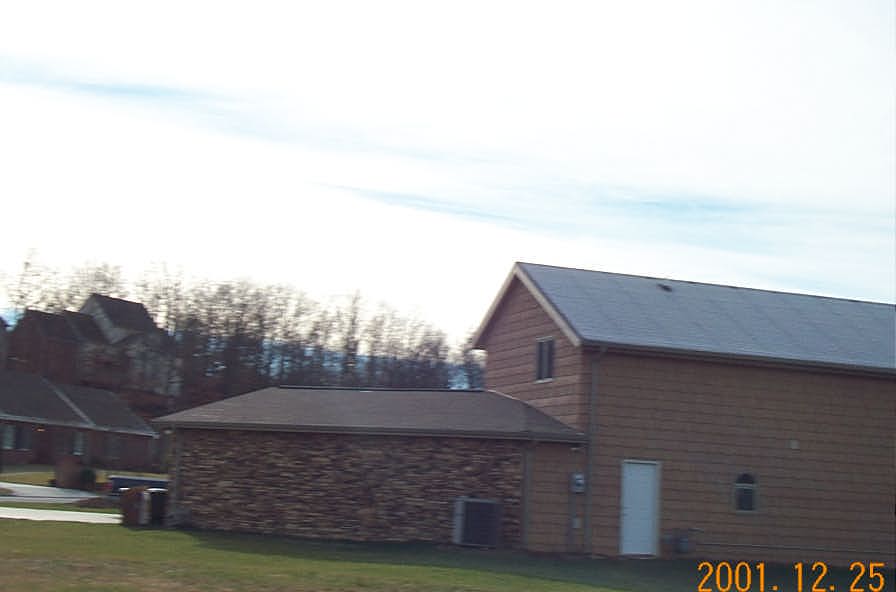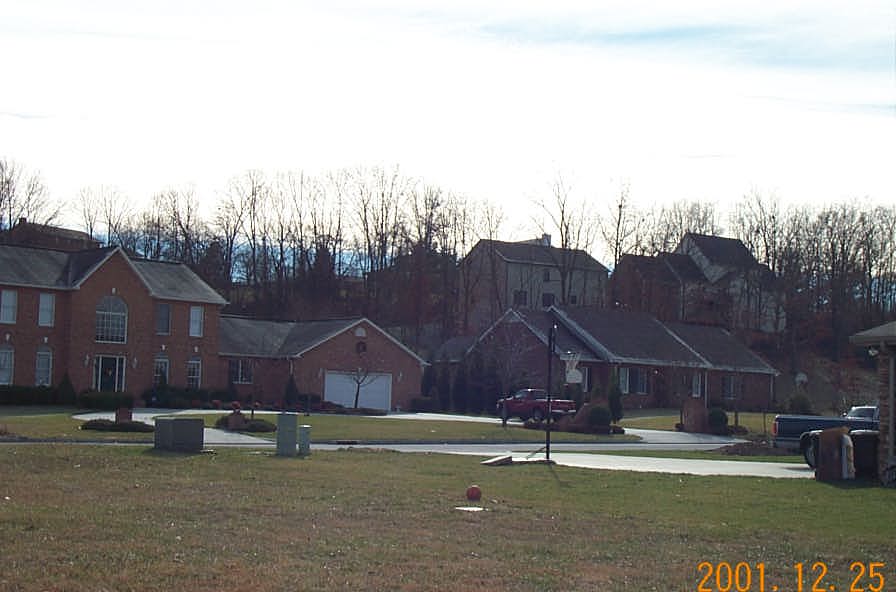|
Home
Up
Hybrid Truck
Video
New Troop 51 web page
| | Insulation is a great way to save on energy bills. I am happy to report
that new building codes do a reasonable job of ensuring reasonable energy
bills. When we compared our home to homes built in the 50's, even those who
upgraded to insulating windows and added attic insulation the savings were
dramatic with our energy costs about 35% of theirs. But when we compared
our house to newer built homes the savings were a more modest 70% of
theirs. Below is a heat loss model that shows the energy savings for a
typical 2000 sqft home using standard 2x4 construction with double pane windows, using 2x6 with insulating
sheathing and low e windows, and finally compared to ICF and SIP
construction with low-e/argon windows. Air infiltration was reduced
as both ICF's and SIP's makes a very tight house adding to energy efficiency.
One advantage of using ICF's and SIP's is they are made of of foam insulation
which holds it's full R-value under all conditions. Fiberglass insulation
looses some of it's insulation value in colder temperatures. This is
because the vapor trapped in the walls add dampness and/or ice
which drops the effective R value.
 |
Here you can see the frost on our SIP roof. There is a
good coating of frost on the main roof indicating there is very little heat
loss. |
 |
You can see the neighbors roof at the same time as the above
shot. The house to the right only has frost on the eves of the roof
indicating heat loss through most of the roof. The other neighbor has
a light coating indicating better insulation than the house on the right but not as good as the SIP
roof. |
The analysis shows a typical January bill of $145 in a code constructed home,
$108 for a well insulated 2x6 construction home and $68 for a SIP/ICF home.
The costs are of 2001 at $.055/kwh. When one adds passive solar orientation, heating costs are further reduced.
This is only the cost to heat and cool. Total savings are not as great as
most people have a similar base level of energy use for lights, cooking and
other appliances.
| Inside
Winter Temp |
|
72 |
|
|
|
|
|
|
|
|
|
|
| Inside Summer Temp |
|
75 |
|
|
|
|
|
|
|
|
|
|
| Outside
Winter Temperature |
30 |
|
|
|
|
|
|
|
|
|
|
| Outside Summer |
|
80 |
|
|
|
|
|
|
|
|
|
|
| % of house shaded |
|
20% |
|
|
|
|
|
|
|
|
|
|
| Cost/KW |
|
$0.065 |
|
|
|
|
|
|
|
|
|
|
| Air Conditioning SEER |
|
11 |
|
|
|
|
|
|
|
|
|
|
| Latent heat gal |
|
3 |
19,457 |
BTU's |
|
|
|
|
|
|
|
|
| Allowance
for latent heat & fans |
80% |
|
|
|
|
|
|
|
|
|
|
| HSPF |
|
7 |
|
|
|
|
|
|
|
|
|
|
|
|
|
|
|
|
|
|
|
|
|
|
|
|
|
2x4 with wood
sheathing |
|
2X6 with
insulating sheathing |
ICF/SIP
construction |
|
|
|
Winter |
Summer |
|
|
Winter |
Summer |
|
|
Winter |
Summer |
| Heat Loss BTU/hr |
|
|
(19,763) |
2,965 |
|
|
(15,896) |
2,311 |
|
|
(11,781) |
1,645 |
| BTU/Day |
|
|
(474,321) |
71,162 |
|
|
(381,511) |
55,453 |
|
|
(282,735) |
39,481 |
| Living BTU's / day |
|
|
50,000 |
40,000 |
|
|
50,000 |
40,000 |
|
|
50,000 |
40,000 |
| Solar Gain South |
|
|
63,000 |
8,750 |
|
|
63,000 |
8,750 |
|
|
63,000 |
8,750 |
| Solar Gain E/W |
|
|
4,000 |
60,000 |
|
|
4,000 |
60,000 |
|
|
4,000 |
60,000 |
| Latent heat loss |
|
|
|
19,457 |
|
|
|
17,511 |
|
|
|
15,566 |
| Net (Loss) gain
BTU/Day |
|
|
(357,321) |
199,370 |
|
|
(264,511) |
181,715 |
|
|
(165,735) |
163,796 |
| KW per day |
|
|
104.66 |
22.66 |
|
|
77.48 |
20.65 |
|
|
48.55 |
18.61 |
| Estimated
$/month |
|
|
$
145.78 |
$
44.18 |
|
|
$
107.92 |
$
40.27 |
|
|
$
67.62 |
$
36.30 |
|
|
|
|
|
|
|
26% |
9% |
|
|
54% |
18% |
|
|
|
Winter |
Summer |
|
|
Winter |
Summer |
|
|
Winter |
Summer |
|
Area |
R |
Heat Loss |
Heat Gain |
|
R |
Heat Loss |
Heat Gain |
|
R |
Heat Loss |
Heat Gain |
| 1st floor N Wall |
380 |
11.5 |
-1388 |
165 |
|
19.8 |
-806 |
96 |
|
50 |
-319 |
38 |
| 1st floor N Window |
60 |
1.9 |
-1326 |
158 |
|
2.4 |
-1050 |
125 |
|
3.5 |
-720 |
86 |
| 1st W window |
40 |
1.9 |
-884 |
189 |
|
2.4 |
-700 |
150 |
|
3.5 |
-480 |
103 |
| 1st floor W Wall |
240 |
11.5 |
-877 |
188 |
|
19.8 |
-509 |
109 |
|
40 |
-252 |
54 |
| 1st S window |
70 |
1.9 |
-1547 |
332 |
|
2.4 |
-1225 |
263 |
|
3.5 |
-840 |
180 |
| 1st S window header |
42 |
4 |
-441 |
95 |
|
10 |
-176 |
38 |
|
50 |
-35 |
8 |
| 1st Door |
40 |
10 |
-168 |
36 |
|
10 |
-168 |
36 |
|
10 |
-168 |
36 |
| 1st S wall |
308 |
11.5 |
-1125 |
241 |
|
19.8 |
-653 |
140 |
|
50 |
-259 |
55 |
| 1st E wall |
280 |
11.5 |
-1023 |
219 |
|
19.8 |
-594 |
127 |
|
50 |
-235 |
50 |
| 1st Roof |
1925 |
30 |
-2695 |
578 |
|
30 |
-2695 |
578 |
|
31 |
-2608 |
559 |
| 1st floor |
1925 |
19 |
-1013 |
-101 |
|
19 |
-1013 |
-101 |
|
19 |
-1013 |
-101 |
| Air Loss cubic ft |
15400 |
|
-7277 |
866 |
|
|
-6306 |
751 |
|
|
-4851 |
578 |
Note I use total effective R for walls not the insulation value.
While the insulation in the wall is R13 the studs have an R of 3.5. On the
average there is a stud every 12 inches and a bottom plate and two top
plates. By averaging the surface area the effective R value is 11.5. |
